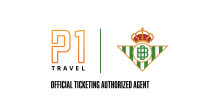This impressive riverside building was originally designed for Expo 92, when it had replicas of Columbus' three ships moored outside (now at the Muelle de las Carabelas in La Rabida). Today the Pabellon houses an excellent interactive museum about maritime navigation. With plenty of multi-sensory touch-listen-smell features, it's a great family attraction, with the added advantage of being by the river. The Pabellon, along with the Torre Mirador, re-opened in January 2012 at a cost of 11 million euros.
As you enter the exhibition area, which consists of one large, open space with a lofty ceiling, you're met by a sea of lights. These14,000 LED bulbs on black stems of varying lengths, slowly fade on and then off, giving the impression of rolling waves. In among the lights are animated films recounting the lives of various different adventurers who sailed to the New World in the 16th and 17th centuries, from missionaries to merchants. The wonderfully spacious Pabellon has curved rib-like wooden beams, adding to the ship-like effect.
Buy Tickets for Real Betis La Liga home matches in Seville. Real Betis vs Villarreal on 10th March 2024. Real Betis vs Celta de Vigo on 14th April 2024, Real Betis vs Sevilla on 28th April 2024. Real Betis vs Almeria 12 May 2024.
Children can be cabin boys - hoist a sail, by pulling on a rope; smell the captain's cabin (pretty whiffy after months without a bath); and listen to real modern-day passengers, including a man who came over on a patera (small boat) from Africa, telling their stories of unusual oceanic voyages (in English and Spanish).
Along the side of this hall are various detailed scale models of ships, from Columbus' legendary Santa Maria, to more modern 20th-century vessels. You can also see artefacts brought back from the voyages to the New World, such as brightly-coloured feather headdresses, tropical insects and gold ingots.
At the far end is the star attraction for younger visitors - a nautically-themed Wii-type arcade: interactive games, where you stand in front of huge TV screens, and steer the ship, shoot pirates or operate a bilge pump. You can also see what sort of food they ate on board, as well as surgical instruments used - a sobering sight. Next to this you'll find a display explaining the close bond between the city of Seville and its river.
There's an extra bonus to your visit: entrance also includes the 50-metre-tall Torre Mirador situated on the river, known during Expo 92 as the Torre Schindler. Take the lift up to the top and enjoy a fabulous view of La Cartuja monastery on one side, Seville's controversial new 180m skyscraper the Torre Pelli on the other, and across the river to the city, and Plaza de Armas, with the Cathedral and Giralda beyond.
There's a shop, and a glass-walled café overlooking the river, with an outside terrace.
The Pabellon and Torre Mirador both also house temporary exhibitions, such as the Titanic Exhibition in October 2012-April 2013.
Opening hours:
Tuesday to Saturday 10.00 to 19.30 (November to April); 10.00 to 20.30 (May to October)
Sunday and Holidays 10.00 to 15.00
The Pabellon is closed on Mondays, and on 1 and 6 January, Easter Sunday, 1 May, 25 and 31 January.
Admission fees:
Adults: 4.90 euros
Reduced: 3.90 euros (over 65, under 14, families with 3 or more children, students, disabled and groups of more than 15).
Free for children under five, group organiser, and those accompanying disabled.
How to get there
The Pabellon is located on Camino de los Descubrimientos in Isla Cartuja, next to the Torre Pelli - across the river from Plaza de Armas bus station. Take the C1 or C2 circular bus and get off at La Cartuja Monastery, then it's a five-minute walk. Alternatively walk over the Cartuja bridge, turn left and walk along the Camino de los Descubrimientos, or over the Puente de la Expiracion and round the back of the Torre Pelli. If you're driving, there's a car park next door.
Nearby attractions
Like most of La Cartuja, this area is little-known by tourists. The Pabellon is close to the Jardin Americano, a botanical garden which also dates from Expo 92, and La Cartuja, a former monastery which now houses a contemporary art centre. Both are excellent for children. The riverside district of Triana is to the south, with its tapas bars, ceramic tile shops, and Inquisition Museum, another recent addition to Seville's historical scene.
